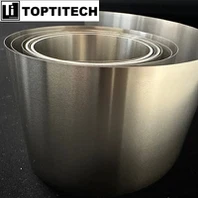1. Deformation strengthening (or strain strengthening, work hardening)
Definition
After the material yields, as the degree of deformation increases, the strength and hardness of the material increase, and the phenomenon that the plasticity and toughness decrease is called deformation strengthening or work hardening.

Mechanism
As the plastic deformation proceeds, the dislocation density increases continuously, so the mutual delivery of dislocations intensifies during movement, resulting in obstacles such as fixed steps and dislocation entanglements, which increase the resistance of dislocation movement and cause deformation. The increase in resistance will make it difficult to continue plastic deformation, thereby improving the strength of the metal: the degree of deformation increases, the strength and hardness of the material increase, the plasticity and toughness decrease, and the dislocation density continues to increase. According to the formula picture, the strength and dislocation density can be known ρ is proportional to one-half of the power, the larger the Burgers vector b of the dislocation, the more significant the strengthening effect.
Method
Cold deformation, such as cold pressing, rolling, shot peening, etc.
Example
The cold-drawn steel wire can double its strength.
The practical significance of deformation strengthening (advantages and disadvantages)
(1) Benefits:
①Deformation strengthening is an effective method to strengthen metals. For some materials that cannot be strengthened by heat treatment, deformation strengthening can be used to increase the strength of the material, which can double the strength.
②It is an important factor in the processing and forming of some workpieces or semi-finished products, which makes the metal deform uniformly and makes the forming of workpieces or semi-finished products possible, such as cold-drawn steel wire and stamping of parts.
③Deformation strengthening can also improve the safety of parts or components during use. When stress concentration or overload occurs in certain parts of the part, plastic deformation will occur at that place, and the deformation of the overloaded part will stop due to work hardening, thereby improving safety. sex.
(2) Disadvantages:
①Deformation strengthening also brings troubles to the production and use of materials. Deformation increases strength and reduces plasticity, making it difficult to continue deformation and requiring more power consumption.
②In order to allow the material to continue to deform, recrystallization annealing is required in the middle, so that the material can continue to deform without cracking, which increases the production cost.
2. Solid solution strengthening
Definition
With the increase of the solute atom content, the strength and hardness of the solid solution increase, and the phenomenon that the plasticity and toughness decrease is called solid solution strengthening.
Mechanism
(1) The dissolution of solute atoms distorts the lattice of the solid solution and hinders the movement of dislocations on the slip plane.
(2) The Coriolis air mass formed by the segregated solute atoms on the dislocation line can pin the dislocation and increase the resistance of the dislocation movement.
(3) The segregation of solute atoms in the stacking fault region hinders the movement of extended dislocations. All factors that hinder the movement of dislocations and increase the resistance of dislocation movement can increase the strength.
law
①In the range of solid solution solubility, the greater the mass fraction of alloying elements, the greater the strengthening effect
②The greater the size difference between solute atoms and solvent atoms, the more significant the strengthening effect will be.
③The strengthening effect of solute elements forming interstitial solid solutions is greater than that of elements forming replacement solid solutions
④The greater the difference in the number of valence electrons between solute atoms and solvent atoms, the greater the strengthening effect.
Method
Alloying, that is, adding alloying elements.
Example
The strength of copper-nickel alloys is greater than that of copper and nickel pure metals.
3. Fine grain strengthening
Definition
With the decrease of the grain size, the strength and hardness of the material increase, and the phenomenon that the plasticity and toughness are also improved is called fine grain strengthening.
Mechanism
The principle lies in the blocking effect of grain boundaries on dislocation slip. For polycrystals, the movement of dislocations must overcome the resistance of the grain boundaries. This is because the dislocation orientations on both sides of the grain boundaries are different, so in a certain grain, the slipped dislocations cannot directly cross the grain boundary and enter the adjacent grain boundary. Only when a large number of dislocations are packed at the grain boundary and cause stress concentration, can the movement of existing dislocations in adjacent grains be stimulated to generate slip. So the finer the grains, the higher the strength of the material.
law
The finer the grain, the larger the grain boundary area. According to the Hall-Page formula picture, the smaller the average diameter d of the grain, the higher the yield strength σs of the material.
The method of grain refinement
① During the crystallization process, the crystal grains can be refined by increasing the degree of supercooling, modification treatment, vibration and stirring to increase the nucleation rate;
② For cold deformed metals, grains can be refined by controlling the degree of deformation and annealing temperature;
③The grains can be refined by heat treatment methods of normalizing and annealing;
④ Alloying elements can be added to the steel to form a new phase to inhibit grain growth.
4. The second phase strengthening
Definition
There are one or several other phases in the metal matrix, and the presence of these phases increases the strength of the metal. Due to the different processes for obtaining the second phase, the second phase strengthening is divided into ①precipitation strengthening: the second phase is obtained through phase change heat treatment ②dispersion strengthening: the second phase is obtained through powder sintering or internal oxidation.
Mechanism
When the dislocation encounters the second phase during the movement, it needs to bypass or cut through the second phase, so that the second phase hinders the movement of the dislocation and improves the strength of the material.
Example
The presence of cementite in steel increases its strength of steel.




